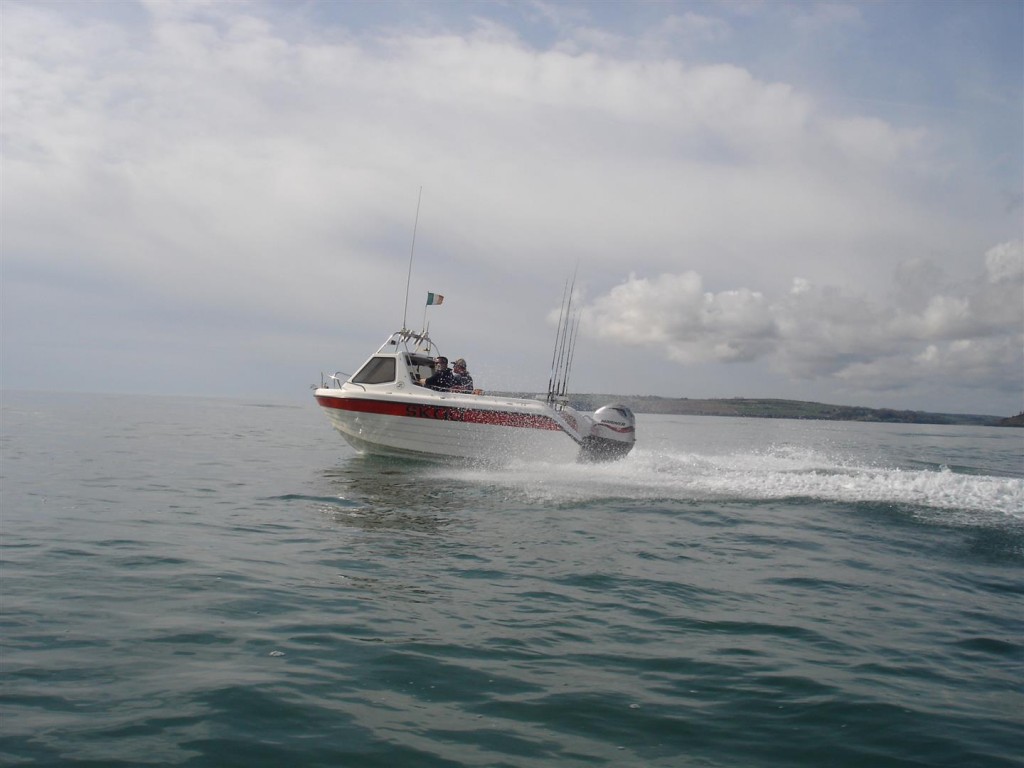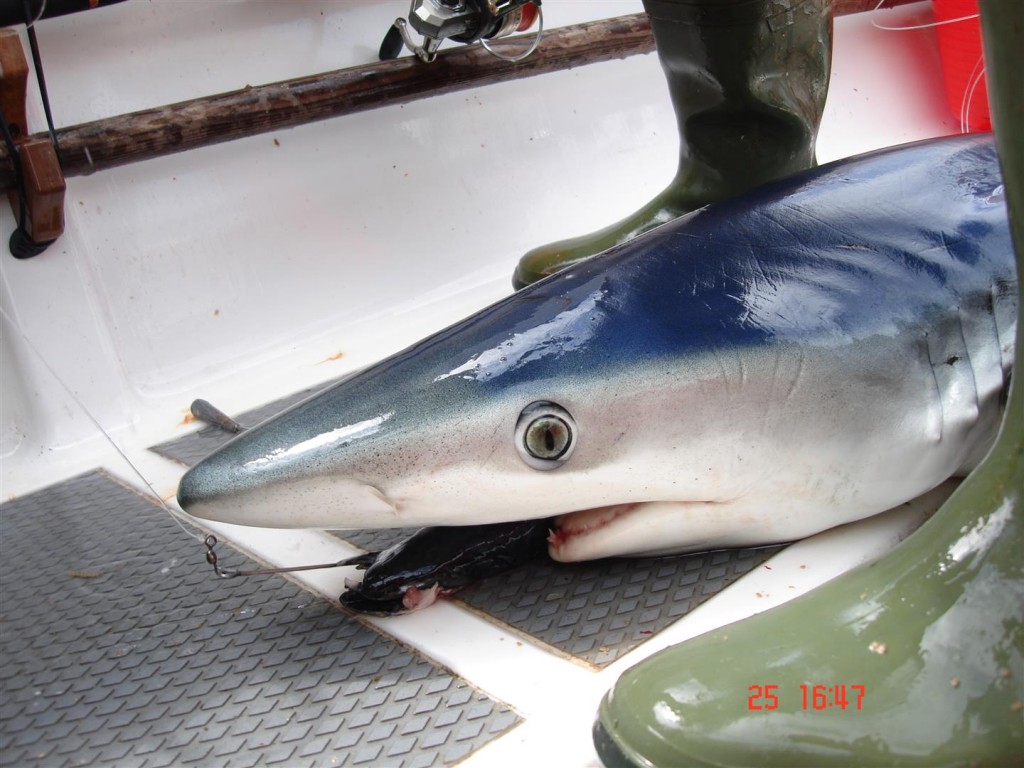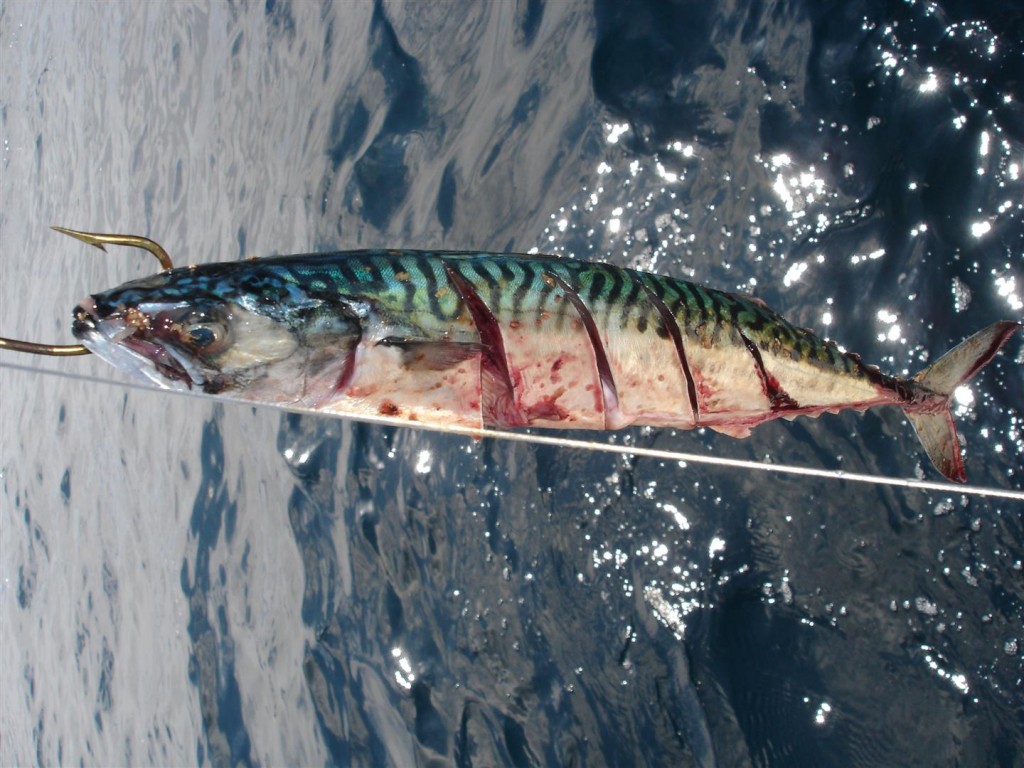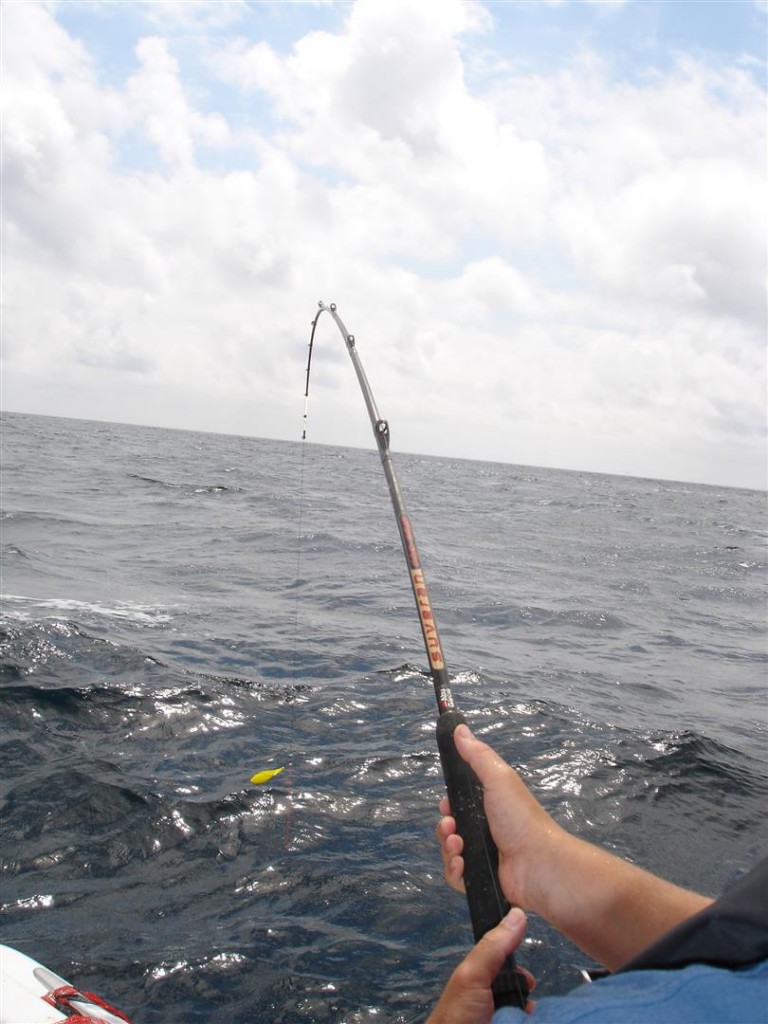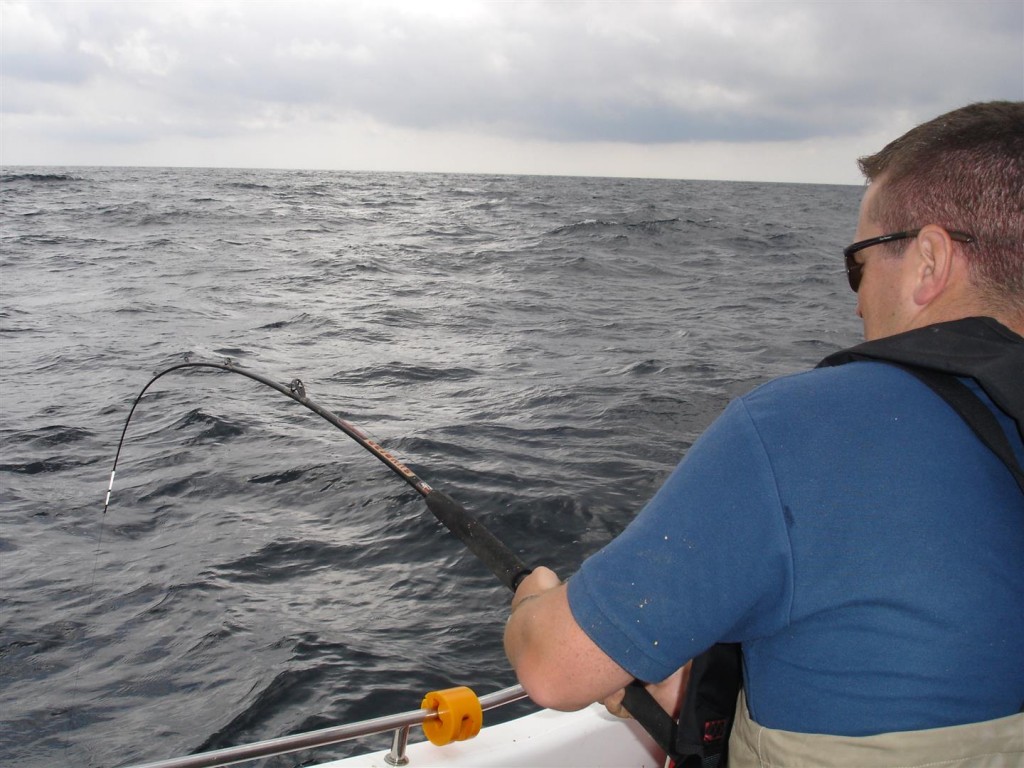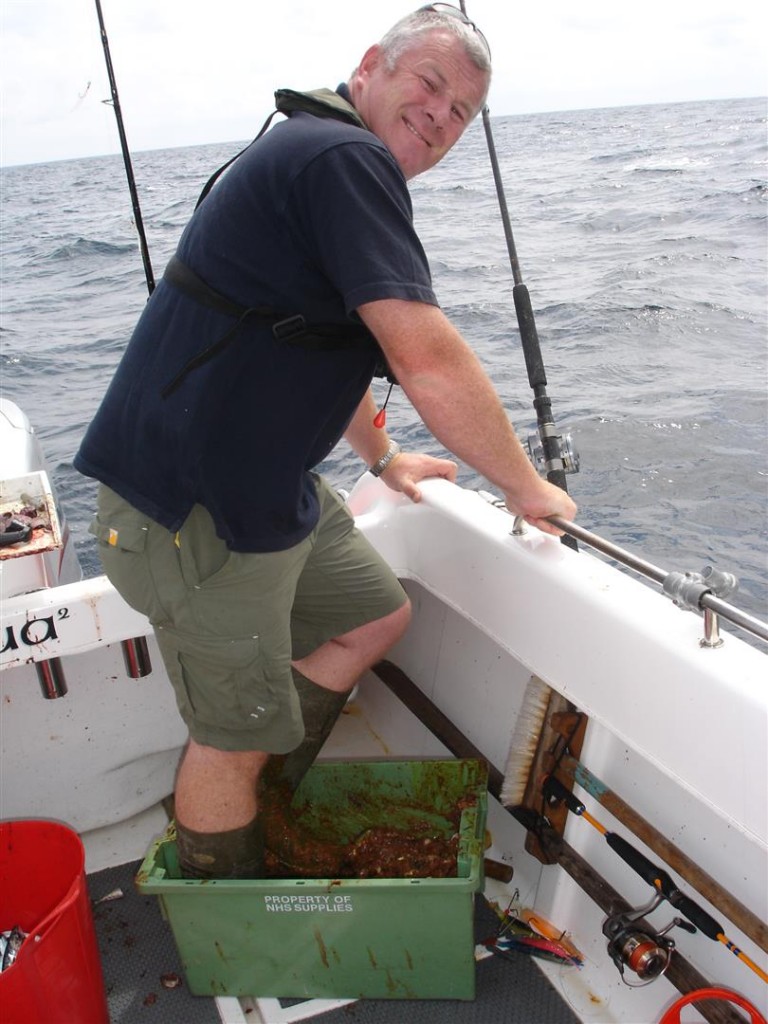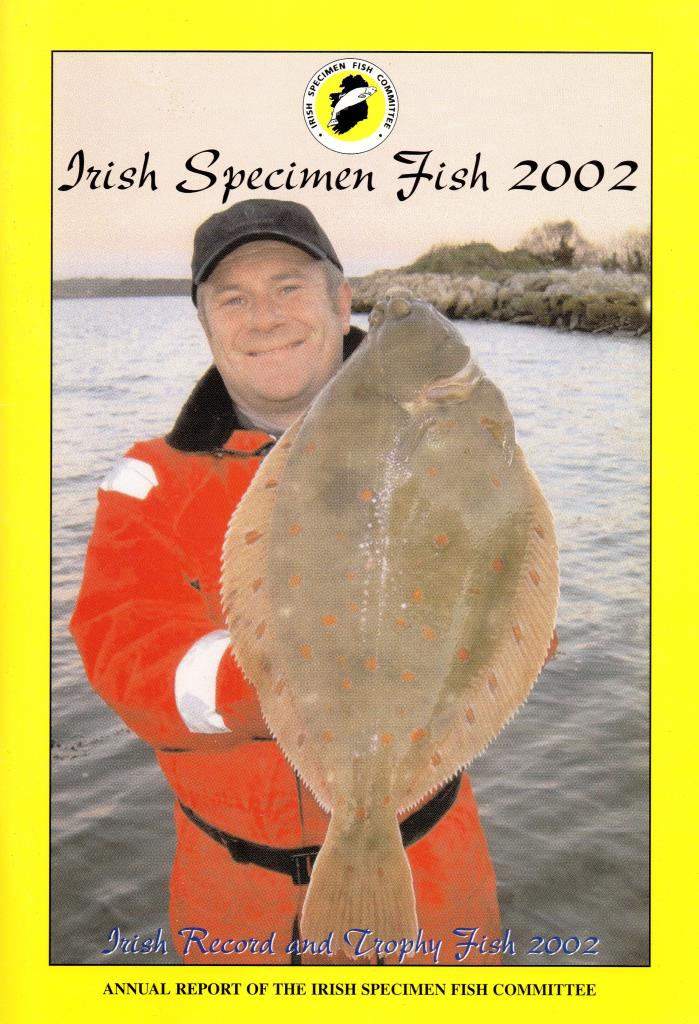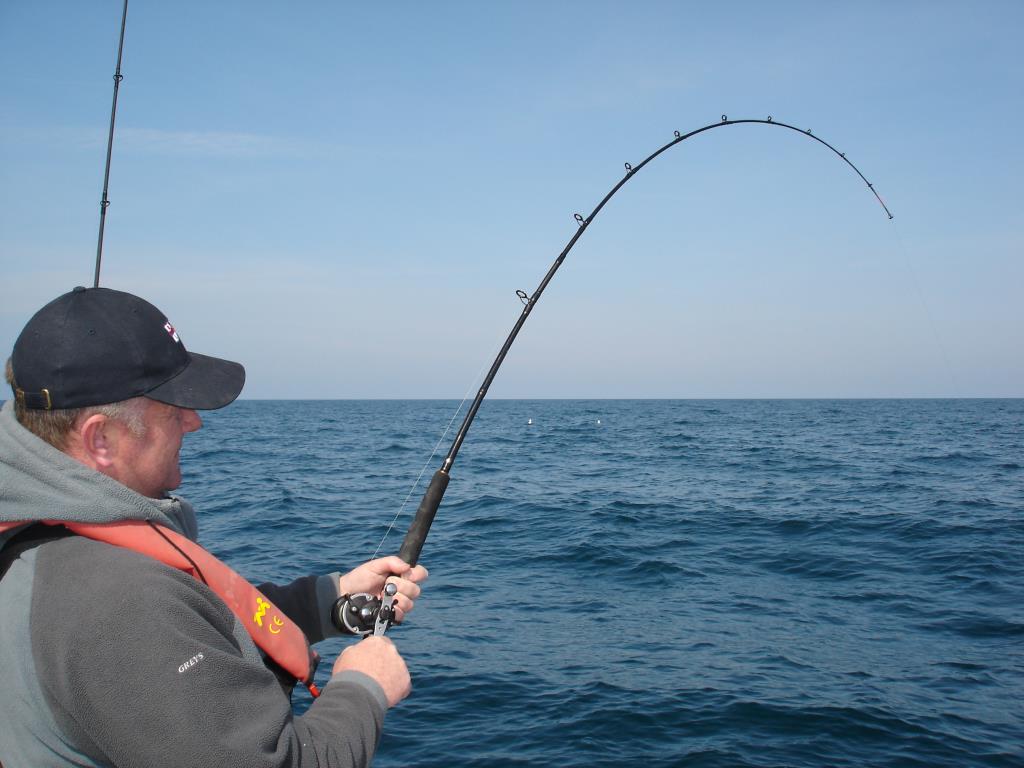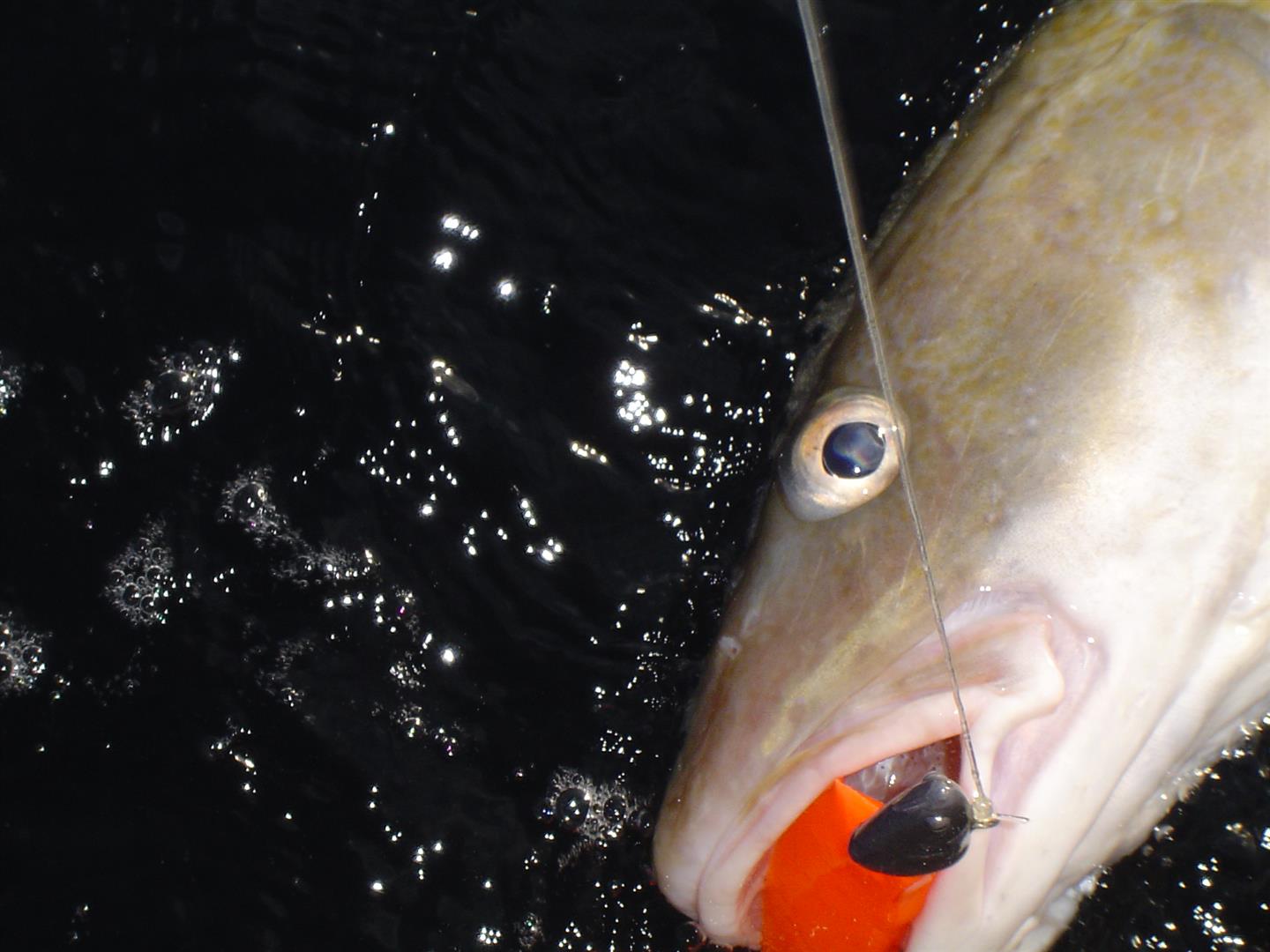*Beat the Blues! – Small Boat Shark Fishing
Under normal circumstances the sound of a multiplier ratchet screaming as line is removed from the spool is mildly annoying. When you have a shark trace at the end of the line and a ruby dubby bag over the side this sound is enough to stop your heart for a second before you realise that all the work and planning has been worth it – a shark has taken your bait and is heading away. All that is left to do is to strike the fish and hang on as that first run is going to be ballistic – this is Dinghy shark fishing at its best!
As the summer heats up and water temperatures increase there are many migrations going on offshore. One of the greatest migrations is that of the Blue Shark. These sleek eating machines come closer to shore following shoals of mackerel, skippers and squid. As the summer progresses there are more and more sharks arriving and these will hunt close to the shore well within range of the dinghy angler. Shark fishing is different from your normal fishing trip. There is a chance you are going to catch a fish that is bigger than anything else you have caught from your boat. There is also a chance that, if not handled correctly, you could end up injured by a thrashing shark. It is important therefore to get the planning and organisation right – to insure you have a good trip. A shark fishing trip is great fun, real man versus top predator stuff. Shark fishing is heart thumping stuff and when you see that huge oblong shaped fish at the side of the boat or you first see the striking blue colour you will be hooked and will want to try this again and again.
The blues arrive in June and will remain around until the mackerel start to move away in November. Water temperature is a critical factor and fishing for blues before the water hits fourteen degrees will be a hit and miss affair. Once the temperature hits the magical mark I will debate about taking a trip. If I hear of a charter skipper catching some shark then it is time to give the gear a final polish and get out for a shark session.
I normally have some shark traces in stock. This year I had to make up some new traces so I adjourned to the shed to get tying. Over the years my traces have changed from all wire to a combination of wire and mono. I begin by crimping a 10/0 to a 14/0 hook to multistranded wire. I take care when crimping and always tie a “Flemish Loop” before crimping. The loop serves the purpose of taking the pressure off the crimp while fighting the fish. At the end of the three feet of wire I will crimp a swivel, a decent 4/0 swivel that will put up with the kind of abuse that a two hundred pound fish can exert. This section of the trace will act as a biting leader. The blue shark is armed with an impressive array of dentures that will make short work of even the strongest mono. To counteract the rolling of the shark, and all blue shark will roll at some stage during the fight, I crimp at least six feet of 250lb mono and finally finish with another swivel. So in overall you have a trace somewhere between twelve and fourteen feet. This length is enough to take on the biggest of fish that you are likely to encounter on the trip and has served me well over many successful trips. All that is required now is a float to attach to your trace and you are ready to take on the world!
Trace building is covered in another TopFisher article here:http://www.topfisher.eu/shark-weak-dont-get-caught-out-with-inferior-traces/
After reading and hearing about some nice catches of shark I felt it was time to get the gear together and get fishing. Rob McClean had expressed an interest in taking a trip as blues were a species he had not targeted before. Perfect! A call to Rob had him basically beefing up his usual tope gear before heading to Cork early on a Friday morning. The evening before we travelled I gathered the extra gear that we would need for the exertions of the day ahead. I put extra buckets on board SKUA, gloves, onion bags, balloons, a pair of old welly boots, the ingredients for rubby dubby and a couple of rods that would be up to the task. I knew Rob would bring his own rods so I packed a12-20 rod for myself. I changed from my normal high-speed reel to a more sedate 4:1 Shimano Calcutta 700. To be safe I would reckon a rod in the 20-30lb class is the ideal tool for shark fishing. While your average fish is going to be somewhere around 60 – 80 lbs there is always the chance of catching a lunker. I like to cater for the average rather than the exception. There is always a debate whether to use braid or mono. For me it’s braid all the way. Braid will have you connected to the fish and you will feel every head shake and lunge. A quality rod will act like a shock absorber and allow for the lack of stretch in braided lines. We are ready to rock. The weather forecast is perfect, we will have a brisk breeze which will allow us to cover ground, a crucial point when shark fishing. Forget about the calm summer’s day, you need to drift briskly in order to get the trail working. Expert charter skippers will like to see a bit of white on the surface when they go shark fishing. Our forecast was giving twelve to fifteen miles an hour wind from the southwest which was going to make the spin out interesting but conditions were going to be ideal for the job at hand.
After much tossing and turning during a night filled with the theme music from Jaws the morning dawned bright and perfect. Rob arrived and we loaded up and were off to the slipway in Cobh. We launched and sped for the mouth of Cork harbour. We had plenty of work to do before we were ever going to launch a shark bait over the side of SKUA. Mackerel is to sharking as fuel is to engines. One will not work without the other! For a more relaxing day shark fishing it would be perfect to catch the mackerel the day before and have the rubby dubby made before the trip. On many days this is not a luxury that can be accommodated so mackerel must be caught on the trip out. Many a shark trip has been ruined by the non appearance of mackerel. Over recent trips I had been catching plenty bait further out so we left Roche’s Point in our wake and headed south rather than wasting time closer to shore. The choice was perfect as on our first drop we loaded up with string after string of perfect fish. Within a half an hour we had enough bait to get started so we headed further south punching our way through a tough short chop, the sort of waves that the Warrior 175 loves.
Where do you go to fish? Later in the season I would not be as fussy and would not need to head so far offshore but on this occasion I headed about sixteen miles from the harbour to a point where we were outside all nearby headlands. We would be drifting for a few hours and would be heading inshore so we needed to allow that we would not be in too shallow water by the time our drift finished. The drift would be between a knot and two knots so we could conceivably cover six miles in four hours my reckoning was that our distance would be enough. We arrived and began the important task of making the rubby dubby. Guys have their own secret recipes for the dubby and Colonel Saunders would be proud of the blends that people will add! We went for simplicity – crushed mackerel, bran and oil. We cut the mackerel into chunks and placed these in a sealed fish box. We added the bran and some vegetable oil, fish oil would be nice but we had to make do. I then donned my old wellies and jumped into the fish box and trampled the mixture into a fine consistency that would just about flow in lumps from the fish box into the onion bags. Over the years I have tried mincers and food processors to make the dubby but have found the “shuffle” to be the best, quickest and less tedious way of getting the concoction ready. When we were ready we filled our first onion sack by placing it inside one of the extra buckets. The object here is to keep the deck as clean and oil free as possible. After trampling the mackerel I used another bucket to wash my wellies again to keep the deck oil free. I tied off the onion sack with light string and hung it off the rear cleat so that the rocking motion of the boat with shake the contents of the bag loose. You can see the immediate effect of the oil as the slick stretches out into the drift as time goes by you will see your slick for miles behind you. Keep an eye on the bag. You may have to punch a few extra holes to leave out some of the bigger chunks of mackerel. We made sure of a constant flow into the trail and went about setting up our baits. Rob opted for the traditional balloon whereas I tried something a little different. I used an eight inch cigar float on my mainline and set it to depth using an elastic band. It worked perfectly and the seagulls seemed uninterested in my float preferring to fight with Rob’s balloon. Either way is effective but I eliminated the possibility of the balloon fouling my top eye by using the float. We had set three rods at varying depths with the deepest at around forty feet. One of the criteria I use when setting out baits is to have them deep enough that the gannets cannot reach them.
We settled in to wait for some action. We cleared the deck of anything that was not necessary. A blue shark will cause some consternation when on deck so a clear area makes the job of unhooking a bit easier. After that it is a matter of watching the floats and watching the dubby bag. We did not have to wait too long. At around thirty minutes into the session Robs reel began to click. We watched his float closely and within seconds it was speeding along the surface. The chances are at this point your mind will go blank as you heart tries to jump from your body through your throat! At this point you must decide what to do next and you do have some choices. Some will leave the shark run, striking when the fish slows down. Others, me included, will strike the fish as soon as possible. I like to strike early because there is always a chance that a fish that is unaware it is hooked may pick up a few baits and cause a woeful mess. A struck fish will take off like greased lightning and will not trouble the other baits. You should keep a close eye on the floats. Many sharks will take the bait and will continue towards the boat so do not depend on your reel ratchet to tell you that you have a fish on. Rob struck into his fish and tightened his drag as much as he dared. I reeled in the other rods and settled in for the fight. It is always better to have one shark on at a time. Double hook ups are a pain on a small boat. After a spirited fight, at least four times the fish came close to the boat and took off again, the shark ended up at the side of the boat. We were sure it was tired enough before grabbing the fish by the tail and hauling it over the gunwales. Once on deck we tried the wet-towel over-the-head trick to calm the fish and keeping well clear of the dentures I t-barred the hook from the fish’s mouth. We took the minimum of time and held the fish up for some pictures and then gently put the fish back, holding it by the tail at the side of the boat until the fish powered away to the deep.
Once the action starts it is highly likely you will have a few sharks in the area. I got my bait back in the water and quickly connected with a huge fish. It ran like no shark I had experienced before. I tightened my drag but the fish still pulled line off my reel effortlessly. Just as I thought I was getting the upper hand my line went slack. I reeled in to find my 14/0 hook straightened. Beaten, I baited up again. We both landed some average sized fish and dealt with a fish that decided to nose the engine for a while and another that decided to take the rubby dubby bag for a snack. It is great to see sharks in their natural environment and you surely realise that the shark is a top predator that has little fear of boats or people. The action was so frenetic that we did not even try fish the trail for garfish. We did not have time! We had a brief lull in fishing before we had another hour of mad action. Rob had the battle of a lifetime from a 100lb plus fish. It took thirty minutes of energy sapping effort as the fish ran numerous times. It is best to unhook your fish at the side of the boat but let’s face it if you have made the effort to fish for sharks you will want the trophy shot – take the smaller fish on board. Support the fishes belly when lifting and enjoy the moment. After three hours fishing we had had enough. We were battered! Sometimes you have to wonder who really wins in these sessions. We had eight hook-ups, a good return for the session. Shark fishing is hard work. There is a lot of preparation but the action makes up for the effort. The rush that you get from hooking one of these monsters will have you wanting to go again and again. If you have never done it you should put a shark session on your list of things to do before the summer ends.
(This article originally appeared in Irish Angler Magazine in 2010.)






